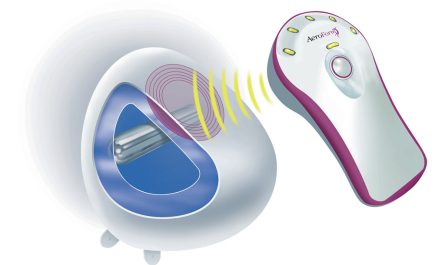Telestroke is a telemedicine service that utilizes real-time audio and video telemedicine technology to connect stroke patients in rural and regional areas to emergency stroke specialists. By bridging the physical distance between patients and specialized care, telestroke aims to overcome geographic barriers and improve timely access to stroke care.
How does Telestroke work?
Telestroke works by connecting local rural hospitals that may not have an on-site stroke specialist, with specialist stroke centers and neurologists through telemedicine technology. When a potential stroke patient arrives at an emergency department in a rural area, the on-site medical team can initiate a telestroke consult. Specialized telestroke carts equipped with cameras, monitors and other equipment allow remote neurologists to visually assess the patient, review scan results and provide a diagnosis. They can then advise on the most appropriate course of treatment, which may involve administering time-critical clot-busting therapies or transferring the patient for further management. The whole process aims to take place within minutes to hours to facilitate rapid treatment.
Benefits of Telestroke for Rural Communities
Access to specialized stroke care: By connecting rural hospitals directly to stroke specialists, Telestroke Services ensures patients in remote areas can access the same level of expertise and care as major cities. It diminishes delays associated with patient transfers over long distances.
Faster treatment: Timely treatment is critical in stroke to reduce disability. Telestroke consultations allow for rapid diagnosis, treatment decisions and initiation of therapies that are dependent on a narrow time-window like clot-busting drugs. This can significantly improve patient outcomes.
Avoided transfers: Not all rural stroke patients need to be transferred for higher level care. Telestroke helps specialists determine whether the local hospital is suitable to provide ongoing care or if transfer is necessary based on the individual case. This saves unnecessary patient transport.
Reduced costs: Telestroke consultations are generally cheaper than long ambulance transfers and avoid additional costs of inter-hospital transfer care. It keeps more patients in their local communities.
Expanded access to clinical trials: Participation in new stroke treatment trials has traditionally been limited in remote areas. Telestroke may help rural centers meet trial protocols and expand research opportunities for their patients.
Benefits of Telestroke for Health Systems
Improved quality of stroke care: By increasing compliance with clinical guidelines and expanding access to specialist opinion, telestroke improves the quality of care provided in rural emergency departments.
Reduced hospital readmissions: Better treatment decisions upfront and coordination with specialist centers leads to fewer patients needing to be readmitted for avoidable complications later on.
More efficient use of resources: Telestroke allows higher level stroke unit beds and specialists to be utilized more effectively. It ensures rural patients are only transferred if absolutely necessary rather than from an abundance of caution alone.
Expansion of stroke networks: Telestroke forms the foundation for broader virtual stroke networks between metro and regional areas. This supports ongoing care, education and research collaboration over the longer term.
Challenges of Implementing Telestroke Services
Upfront technology and setup costs: Initial investments are required for telestroke equipment, infrastructure and training of local clinical staff to use telemedicine consultations. Ongoing maintenance of technology also needs funding support.
Reliability of telecommunications: Telestroke is highly reliant on robust and consistent IT networks for real-time transmission of audio-visual evaluations. Connectivity issues can delay consults in emergencies if not adequately addressed.
Change management for clinical teams: Successful adoption of telestroke models requires rural facilities and specialists to adapt their workflows. Clear leadership, training and protocols are important to drive provider acceptance and utilization.
Sustainability planning: Factors like funding models, equipment lifecycles, staff resourcing and partnerships need ongoing commitment to guarantee long term viability of telestroke programs.
Medicolegal and licensure issues: Legal agreements, credentialing of remote specialists and management of responsibilities across multiple jurisdictions can pose regulatory barriers.
The Future of Telestroke
As telemedicine and network infrastructure continues to improve at a rapid pace, the future of telestroke looks very promising. Advanced applications utilizing augmented reality, virtual reality, wearable sensors and artificial intelligence are being explored to not just improve access but transform the way stroke care is delivered altogether. Some key advancements include:
– Mobile stroke units with onboard telestroke capabilities will enable immediate remote consultations from the community.
– AR/VR assisted tele-rehabilitation programs delivered through telestroke networks can help expand access to recovery services in the home.
– AI image analysis and autonomous reporting of scans may reduce specialists’ workload and speed up teleconsultation turnaround times.
– Wearable sensors sending continuous vital signs to telestroke platforms could enable remote patient monitoring over longer periods.
With ongoing innovation addressing connectivity issues and greater integration within digital health ecosystems, telestroke services has tremendous potential to revolutionize stroke care delivery and ensure equitable access for all communities into the future.
*Note:
1. Source: Coherent Market Insights, Public sources, Desk research
2. We have leveraged AI tools to mine information and compile it



